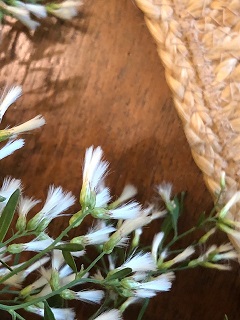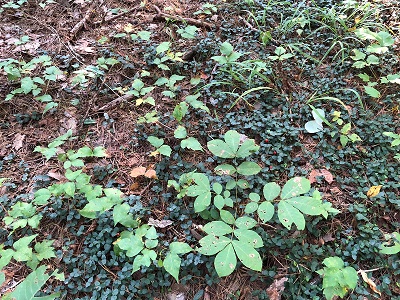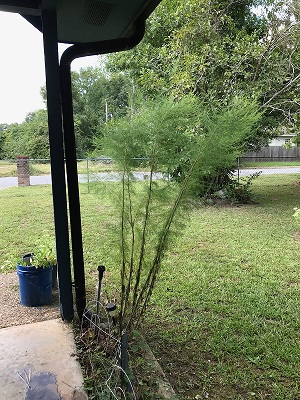Garden FAQs and Reference Desk
Here you will find Janet Carson's (retired Horticulture Specialist) "In the Garden" Questions and Answers which were found weekly in The Arkansas Democrat/Gazette.
All of the Questions & Answers that Janet wrote for all publications are archived.
In the Garden articles
December 1, 2018
![]()
This tree/bush every fall has these copious white flowers if they can be called that. I can’t find it in my Carl Hunter books. Any ideas?

![]() The plant in question is groundsel bush, Baccharis halimifolia. The plant is in the
daisy family and native to the coastal areas of the southeastern US but it is spreading.
We see it getting thicker and thicker every season on roadsides. It is showy in the
late fall and early winter, but it freely reseeds itself and can become quite invasive.
There are separate male and separate female flowers, with the females more showy.
In the saltwater heavy native areas, it is commonly called Salt bush because it is
tolerant of salt sprays.
The plant in question is groundsel bush, Baccharis halimifolia. The plant is in the
daisy family and native to the coastal areas of the southeastern US but it is spreading.
We see it getting thicker and thicker every season on roadsides. It is showy in the
late fall and early winter, but it freely reseeds itself and can become quite invasive.
There are separate male and separate female flowers, with the females more showy.
In the saltwater heavy native areas, it is commonly called Salt bush because it is
tolerant of salt sprays.
![]()
Could you give me some info on this ground cover? It is located in a wooded area near my home in Hot Springs Village. I am interested on acquiring some to plant in an area that has mostly shade

![]()
The evergreen small-leafed, dark green ground cover is a wonderful native plant called Partridgeberry- (Mitchella repens). It is a ground-hugging plant that thrives in the shade, but is slow growing. It has a small white flower in the spring and beautiful red berries in the fall. I would encourage it and let it spread. I wish it were common in the landscape trade, but I think its slow growth is the reason it is not commonly sold. If you can find it at a nursery, buy it. Unfortunately, in your picture, you also have a good stand of poison ivy and some hickory seedlings. Use care in killing those so you don’t damage the partridgeberry.
![]()
This plant just appeared in my yard. One friend says its asparagus fern. Is it edible or desirable?

![]()
The plant in question is a native perennial called dog fennel - Eupatorium capillifolium. The plant spreads both by seeds and rootstocks which come from the main taproot and grow laterally in all directions, so it can spread aggressive. When crushed, the leaves and flowers release an unpleasant odor. The common name refers to the fennel-like odor, which dogs appear to enjoy, thus the common name. It is not edible, and I find it too invasive to be desirable.
![]()
My red tip photinias are dying from leaf spot disease so I am removing them. Can
you suggest another bush that would provide a screen from the street?
![]()
You have several options. There are numerous species of hollies that grow large and can provide screening, including standard yaupon holly, Foster holly, lusterleaf holly or Nelly R. Stevens holly. You can also try cleyera, one of the little leaf magnolias, or one of the standard arborvitae.
![]()
Nutgrass and Bermuda grass have taken over my iris beds. Now that it has gotten cold,
can I do something to eradicate the two weeds so that I can start clean next spring?
Will Roundup work now?
![]()
Unfortunately, nutgrass and Bermuda grass are both warm season perennial weeds. Now that the weather has gotten cold, they have gone dormant and herbicides are not effective. Roundup only works on actively growing plants. You can clean up the top growth to make the planting look less weedy, but both weeds will grow back next spring. There is a grass-specific herbicide that can work on the Bermuda grass after it has greened up, but it won’t touch the nutgrass. You could lift the iris next spring after bloom, then use Roundup on the weeds after they emerge and then replant the iris. Good luck, whatever you do it won’t be easy or effective with just one shot.